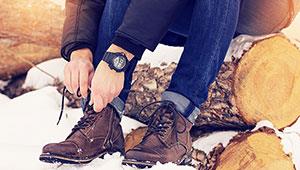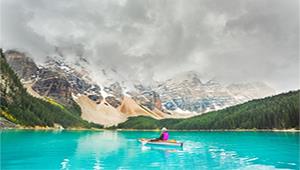Decide on the Best Material
Next, you'll want to consider which material makes the most sense for you.
Synthetic materials are lighter, more breathable and easier to break in. They're ideal for the desert or other dry climates.
More: Tips for Winter Hiking
Leather shoes are preferable if you do a lot of hiking in wet conditions or on muddy trails. They're much easier to waterproof and are more durable. Just recognize that you'll need to take some extra time to break them in before hitting the trail.
Don't Rush
Now that you've got a pretty good idea of what your needs are, it's time to head to the store and try on some hiking boots.
Rule No. 1: Take your time. If you need to get in and out of the store in a hurry, you run the risk of settling for something that isn't quite right and end up regretting the decision the next time you're out on the trail.
More: How to Prepare for a Strenuous Hike
To help get the perfect fit, it's best to shop later in the day, when your feet are slightly swollen, as they will be after a long day of hiking.
Try on several pairs to get the feel for each. Even two pairs of the identical size can have slightly different shaped foot beds, which will affect comfort.
Mimic Hiking Conditions
Wear the socks you would normally wear on a hike to the store and take a couple minutes to lace the shoes properly.
You should walk around the store for several minutes. Look for stairs to climb; some stores even have inclines you can walk up and down.
More: Get Fit with Hiking
As you're testing the hiking boots, pay particular attention to your heels and toes. The shoes should provide a firm fit for your heels; they shouldn't slide forward at all. Make sure your toes don't feel cramped; you should have room to wiggle them.
- 2
- of
- 3










Discuss This Article